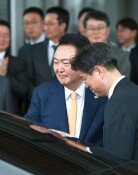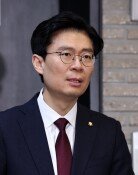Is the sound of an economic alarm not loud enough yet?
Is the sound of an economic alarm not loud enough yet?
Posted May. 23, 2019 07:39,
Updated May. 23, 2019 07:39
The government-funded research institute Korea Development Institute (KDI) on Tuesday lowered South Korea’s 2019 economic growth forecast from 2.6 percent to 2.4 percent, saying, “Domestic demand and exports are both shrinking.” The Organisation for Economic Co-operation and Development (OECD) on Monday also brought down its forecast for South Korea’s growth by 0.2 percentage point to 2.4 percent from its last estimation just in two months. The international organization either maintained or raised forecasted growth rates for other major countries.
This negative outlook over the country’s economy has been caused by poorly performing economic metrics—from export with negative growth for the past six consecutive months to production, investment, consumption, and employment—and the subsequent slowdown of South Korea’s economic engine. The economic growth rate of 2.4 percent forecasted by the two organizations is far below the potential growth rate of 2.6 to 2.7 percent estimated by KDI, which is the level of growth that South Korea can achieve on its own economic fundamentals. The nation safeguarded its growth rate even during the global financial crisis when most major economies struggled severely, but now it has lost the momentum in just 10 years and found itself in a position to worry about the long-term low-growth trend
KDI warned of a further decrease in the newly adjusted growth forecast in the event of a further slowdown in global trade due to the U.S.-China trade war. Some global investment banks already lowered their economic growth forecast for South Korea below two percent. The stubbornness of the South Korean presidential office still advocating for the policies that have only brought negative effects to the market while maintaining a naively optimistic view of the Korean economy heading for success is rather incomprehensible.
Warnings from both domestic and international institutions about the South Korean economy must be accepted. Focused efforts for fundamental structural reform and the improvement of economic fundamentals are required to prevent further growth rate decrease. The income-driven growth policies require a comprehensive rethinking in light of the first official report by the Ministry of Employment and Labor that admitted employment reduction resulting from the excessive minimum wage increase. Efforts to drive up lower labor productivity, which has been pointed out as a chronic problem of the South Korean economy, must be made as well. OECD also recommended the country to ease minimum wage increase and improve labor productivity considering the introduction of the 52-hour workweek system and the decreasing number of working age population. According to KDI, South Korea’s growth rate will be slightly below two percent in the 2020s if the productivity growth trend remains as it is. Neither expansionary fiscal policy nor monetary policy to boost the economy will be able to bring continued growth to the country without labor reform to break away from the rigid labor market and bold deregulation to drive the qualitative transition of industry structure.







